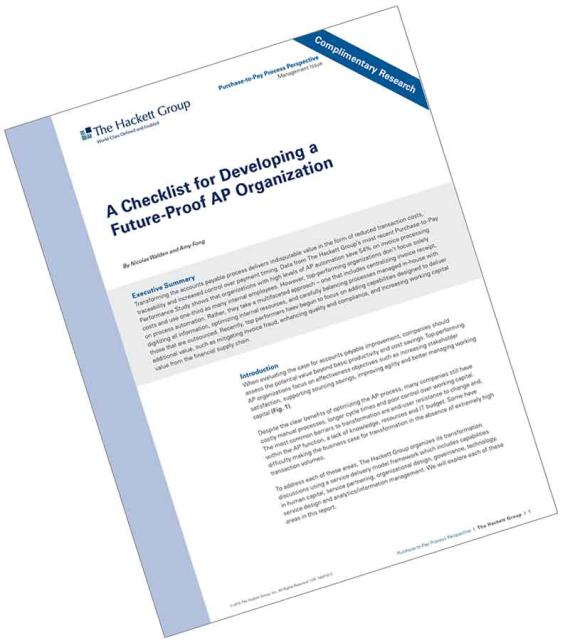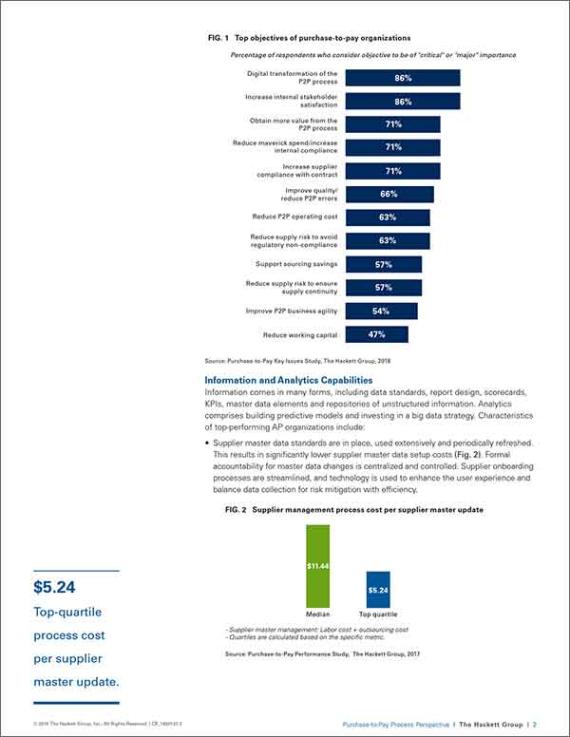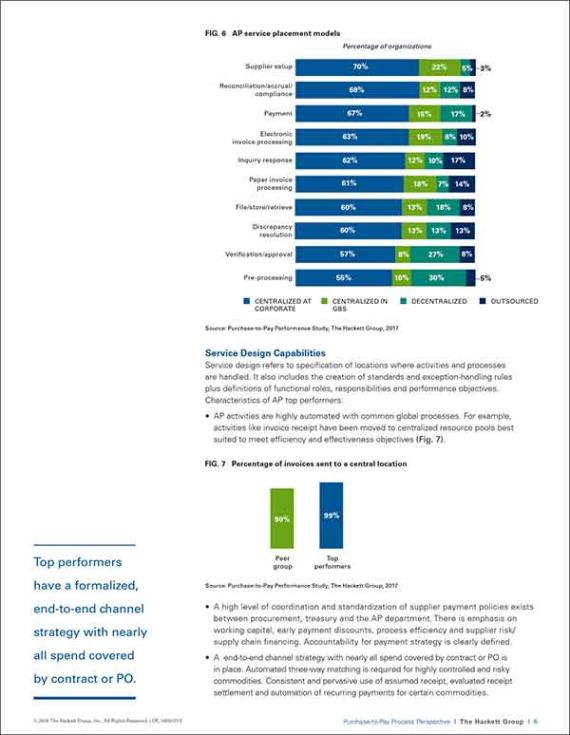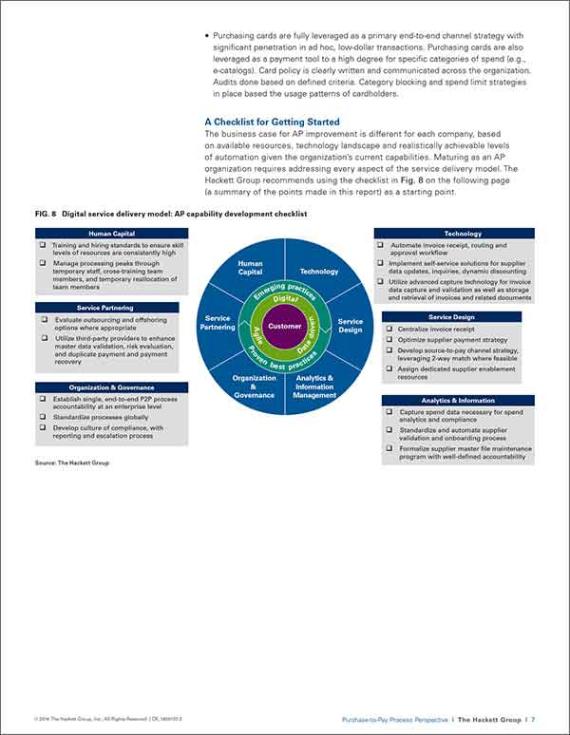A Checklist for Developing a Future-Proof AP Organization
This Hackett Group report helps organizations understand the business value of digital transformation and optimizing your AP processes. Gain insight into what top performers are focusing on and make the business case for improving AP capabilities by developing a future-proof strategy.
Your Guide to Transforming Accounts Payable Processes
Read this report and learn how to enhance the following areas:
- Information, analytics, and technology
- Human capital and service partnering
- Organization, governance, and reporting
- Service design including automation
Many accounts payable (AP) organizations are still stuck using paper-based processes, which lead to longer payment cycles and less control over working capital. While optimizing processes delivers measurable cost-savings and increases productivity, companies may be resistant to change due to lack of knowledge or lack of desire on the part of end-users. But transforming your AP organization can improve agility and control, support sourcing savings, and more.


FAQ



